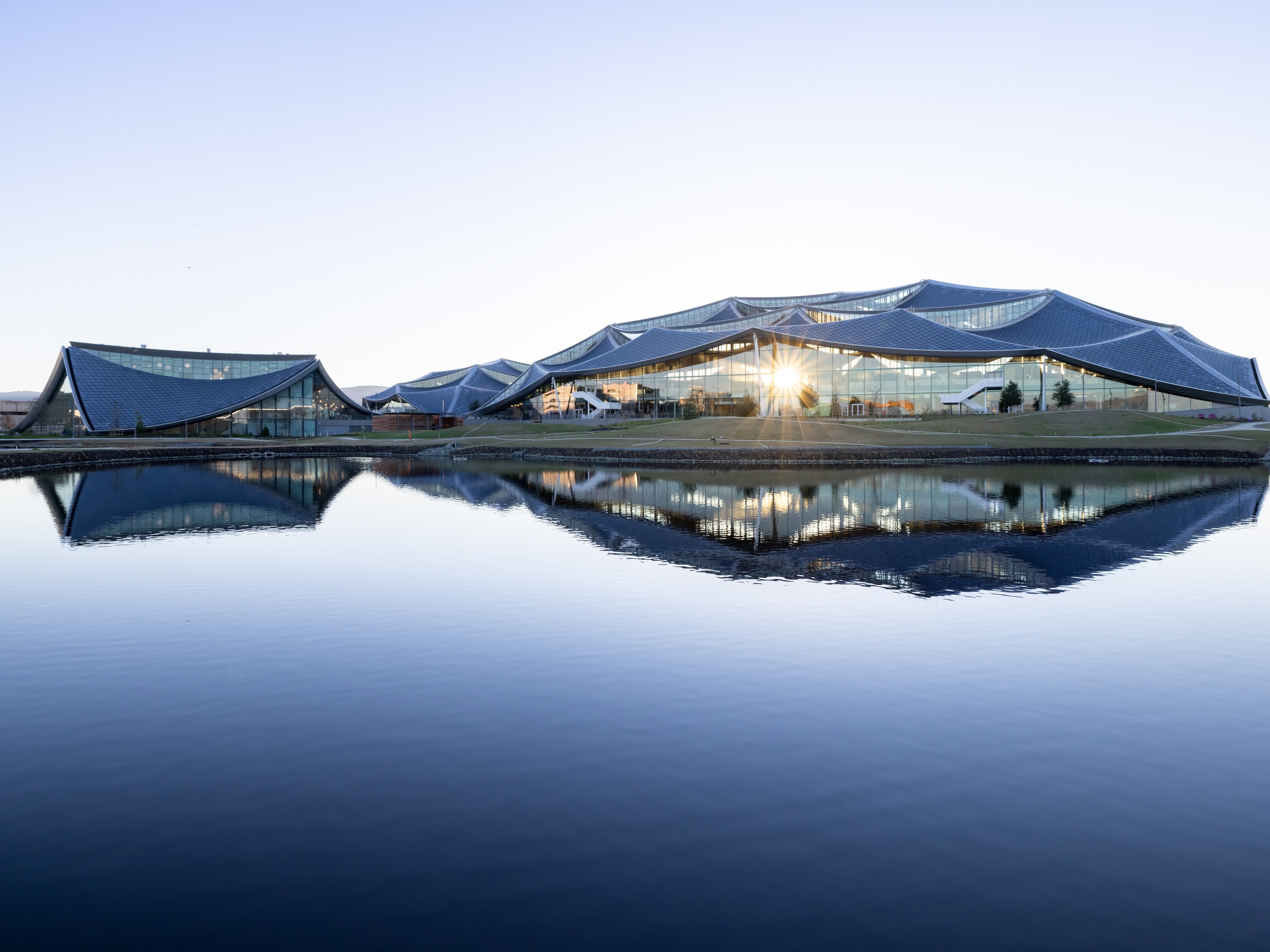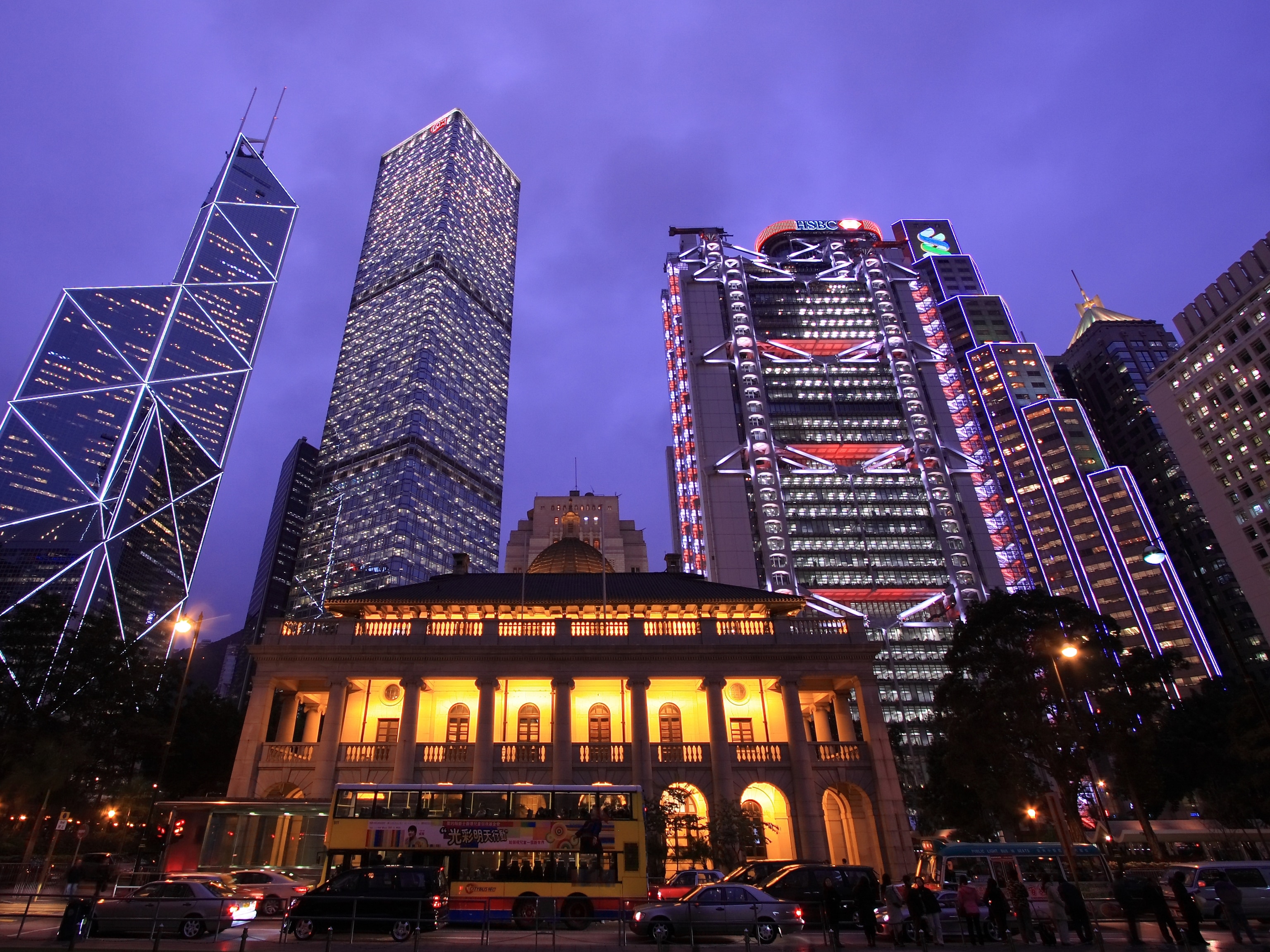Environmentally friendly buildings are an essential defense in the fight against climate change. According to the United Nations Environment Programme, buildings account for roughly 40 percent of global energy consumption and a third of the world’s greenhouse gas emissions.
Given the sector’s colossal impact, many pioneering architects have championed green buildings in all corners of the world. Drawing inspiration from nature, buildings like St Mary Axe in London, the Shanghai Tower, and The Henderson in Hong Kong have all pushed the envelope when it comes to developing healthier, more efficient structures.
But it’s not an easy task. From climate-related challenges to site limitations, these groundbreaking towers overcame many obstacles to achieve structural integrity, reduce electricity usage, cut carbon emissions, incorporate greenery and support the well-being of occupants.
The Shanghai Tower, Shanghai
As the tallest building in China and the second tallest in the world, the 632-meter-tall Shanghai Tower is impossible to miss. Inspired by Shanghai’s urban parks and courtyards, San Francisco-based Gensler architects designed the tower to feel like “unique, vertically interconnected neighborhoods”.
To achieve its vision, the firm divided the tower into nine areas—each with its own atrium with cafes, shops, and lush sky gardens. Between the outdoor and indoor landscaping, the tower has 33 percent green cover, which helped it earn the LEED Platinum certification.
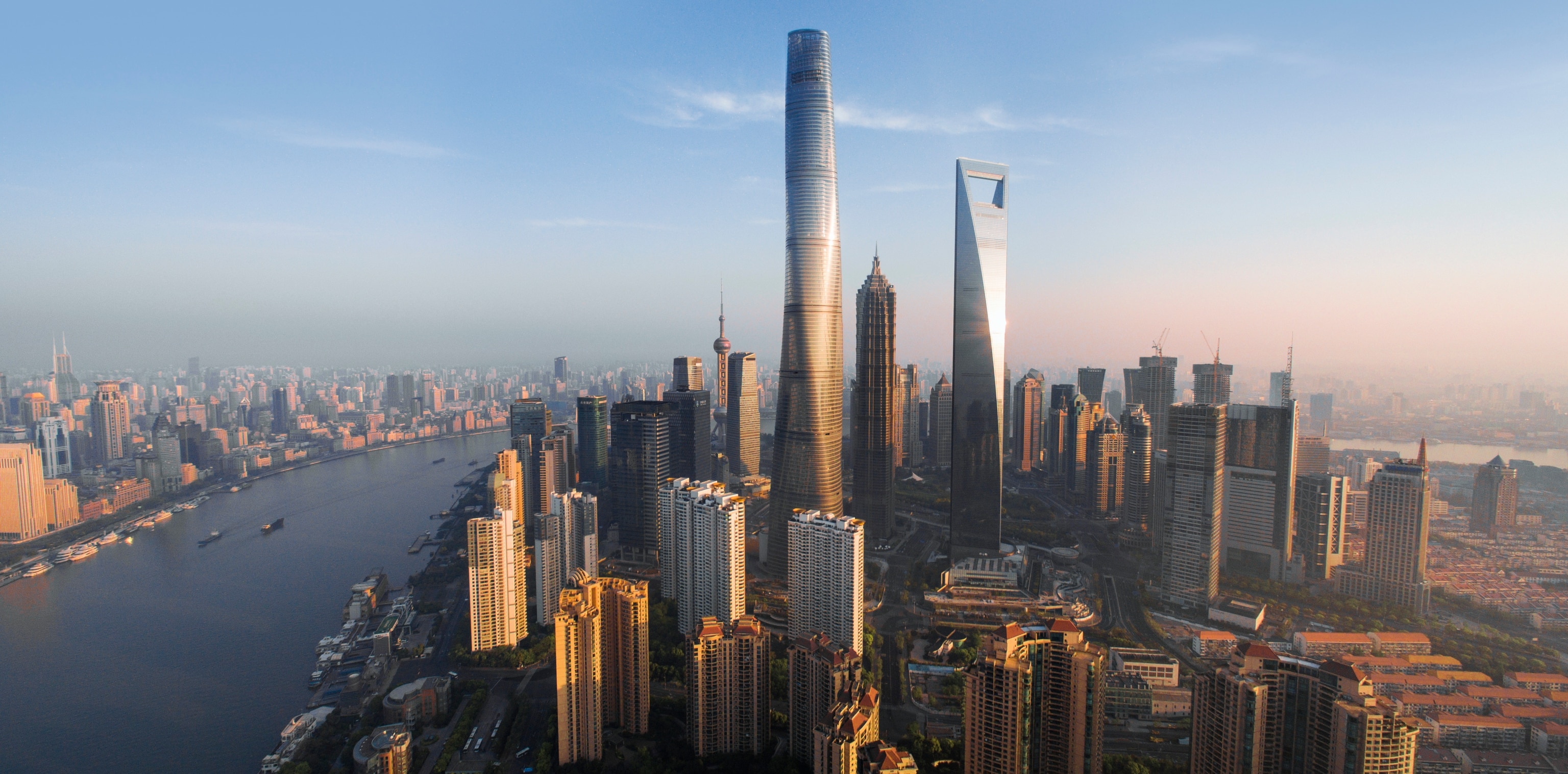
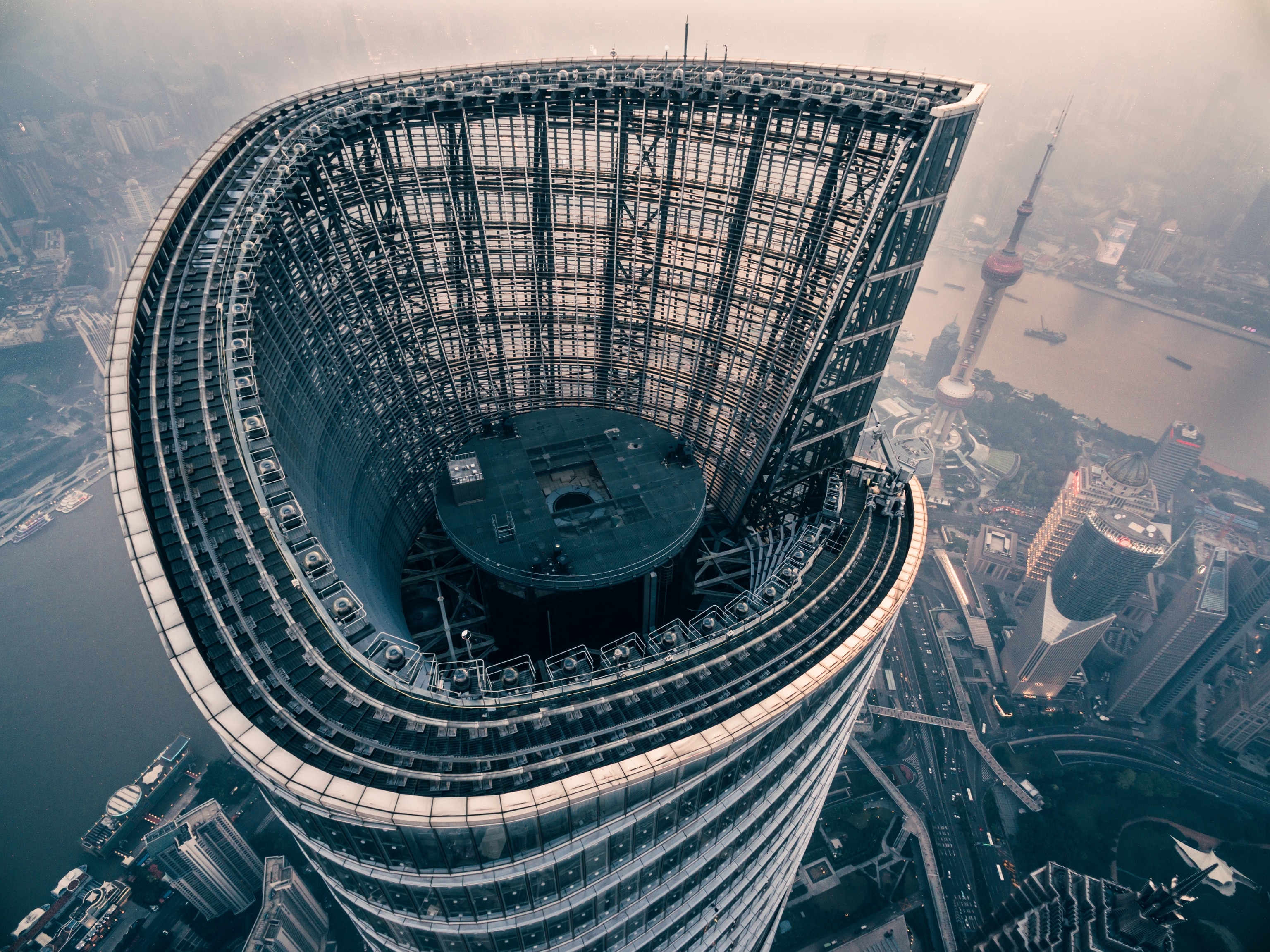
The 120-degree-spiraling façade offsets strong winds in the typhoon-prone climate, while a pair of glazed curtain walls provides extra insulation, natural ventilation, and natural light. In addition, the building generates power from 270 wind turbines and uses recycled rainwater for its air-conditioning systems. All in all, the structure uses 21 percent less energy and 52 percent less water than comparable towers.
The Henderson, Hong Kong
Designed by Zaha Hadid Architects (ZHA) and developed by Henderson Land, this office tower will resemble the bud of a bauhinia x blakeana flower—the city’s floral emblem—about to bloom when it reaches completion in 2023. The ode to nature doesn’t stop there: ZHA has incorporated lush landscaping, a massive green wall above the driveway, spacious terraces, a sky garden, and excellent views of nearby Chater Garden and Hong Kong Park on the upper floors.
Intended to be a 21st-century architectural icon, The Henderson has set out to offer a smart, sustainable, people-centric indoor environment with column-free office spaces. For example, the project team has created three patented designs, including a “solar responsive ventilator”—a new zero-carbon technology that uses solar power to cool window areas. To promote more eco-friendly behaviors, tenants can monitor emissions and energy consumption in real-time via a user-friendly office app and take advantage of an industry-first ESG partnership program that harnesses the building’s smart tech features.
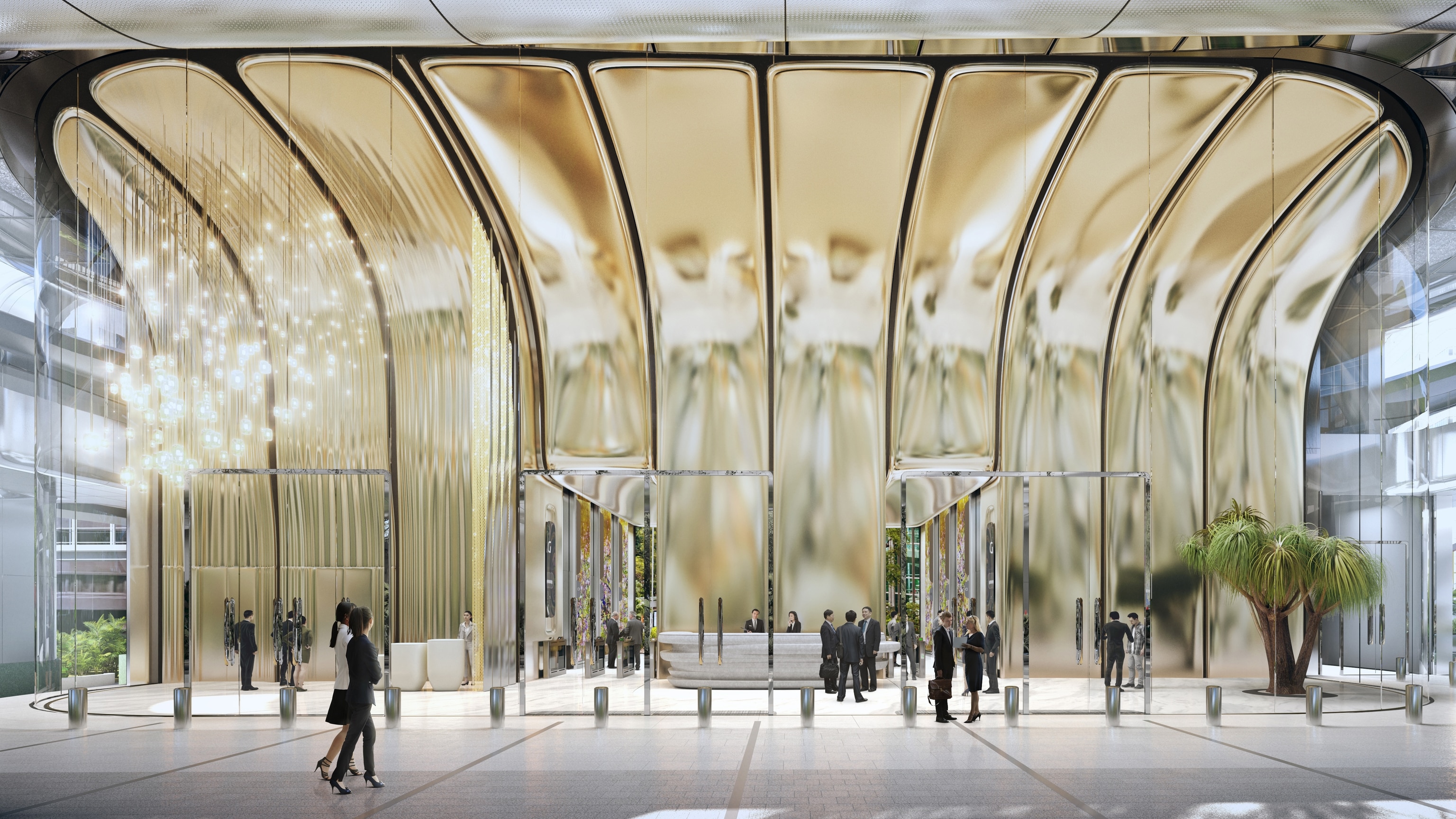
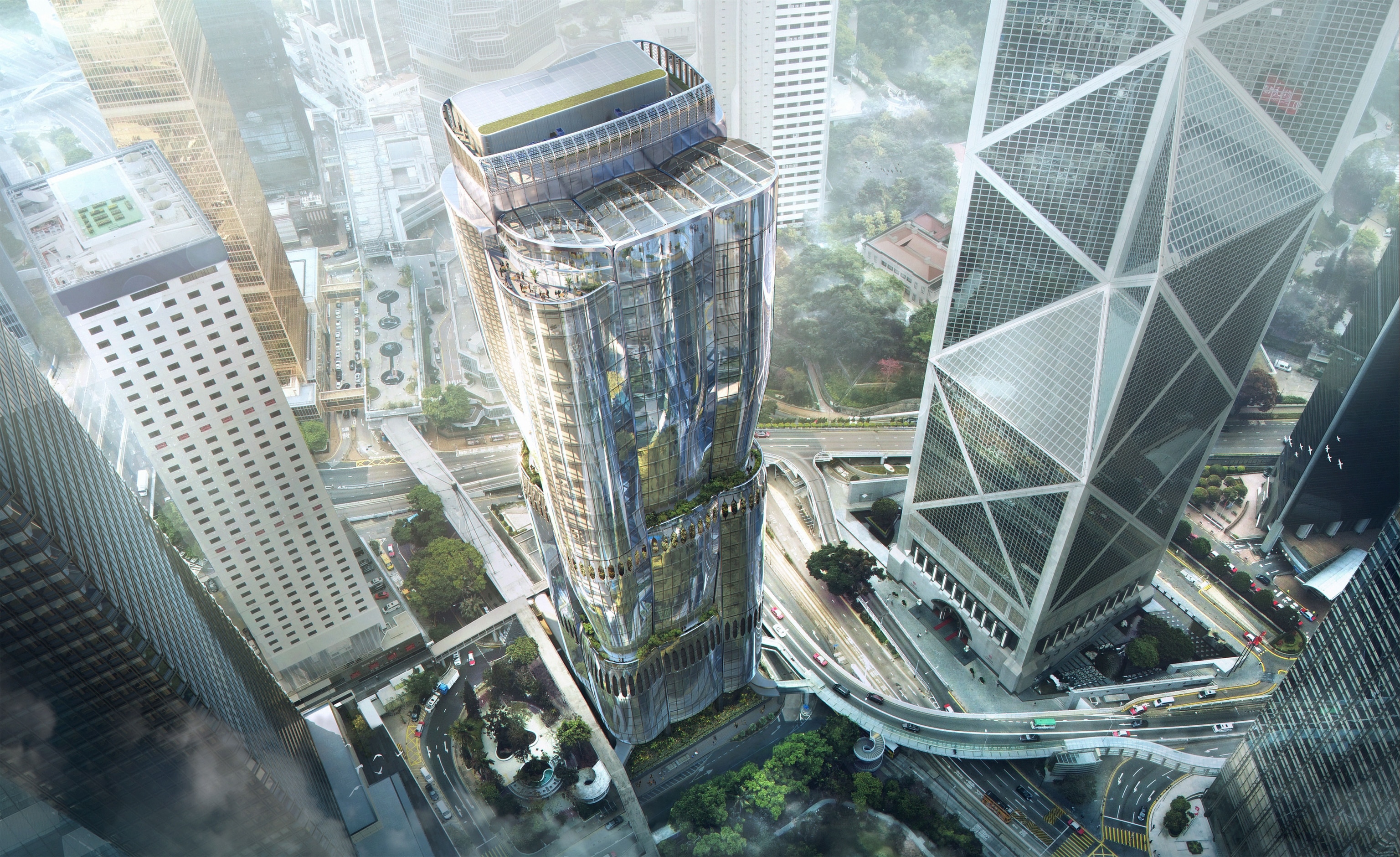
For added resilience during powerful typhoons, which are common in Hong Kong, ZHA and Henderson Land also developed a novel “façade resilient” design, employing “4-ply, double-laminated, 3D-curved” glass panels. Glazed and highly robust, the visually appealing façade enables cool, bright, UV-free natural light to stream into the building.
With its innovative strategies, the developer expects to reduce energy consumption by 26 percent and water consumption by 50 percent—targets that have earned the building seven globally recognized accreditations, including LEED and WELL Platinum pre-certifications, as well as the new WiredScore and SmartScore Platinum certifications. The latter recognizes The Henderson for using smart technologies to encourage behavioral changes that reduce carbon emissions without compromising comfort.
Burj Khalifa, Dubai
The 828-meter-tall Burj Khalifa became the world’s tallest building when it was inaugurated in 2010—and it still holds that title today. When designing the trip-pod like floorplan, Chicago-based firm Skidmore, Owings & Merrill took inspiration from the hymenocallis, or spider lily, a regional desert flower with a central white bulb and six long, slender petals.
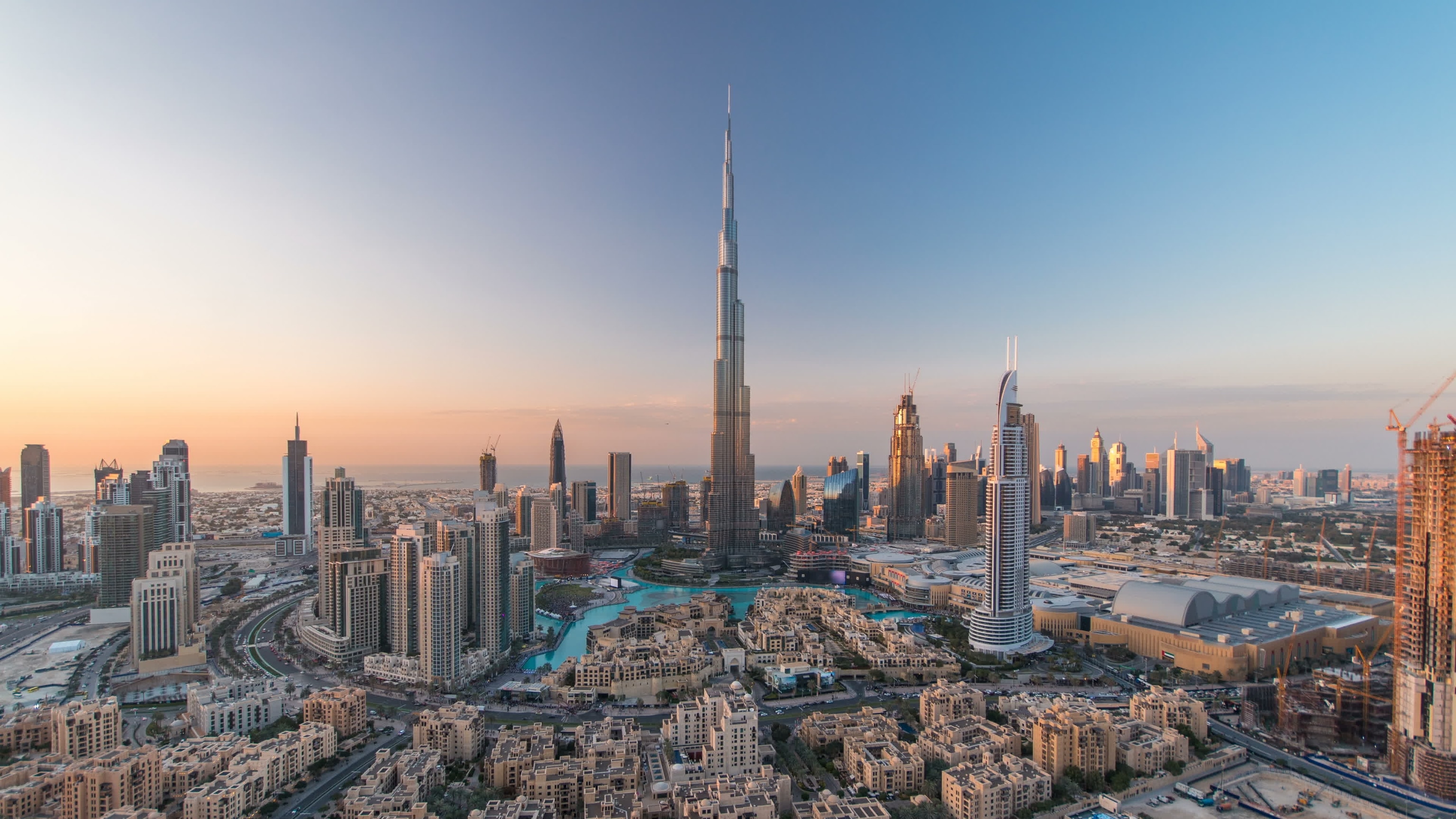
Guided by Dubai’s hot, sunny and windy desert climate, the architects designed a tiered façade that prevents wind vortices from forming, a curved curtain wall that reflects direct sunlight, and an innovative “sky-sourced” ventilation system that distributes cooler, dryer air to reduce air-conditioning usage.
In addition, the LEED Gold-certified building harnesses energy from solar panels and uses a condensate recovery system to convert air-conditioning steam into irrigation water.
30 St Mary Axe, London
Considered London’s first eco-friendly skyscraper, 30 St Mary Axe—better known as The Gherkin—is known for its unconventional form. Limited by space constraints, Foster + Partners chose a tapered bottom to enable more public space at street level for shops, cafes, and a piazza.
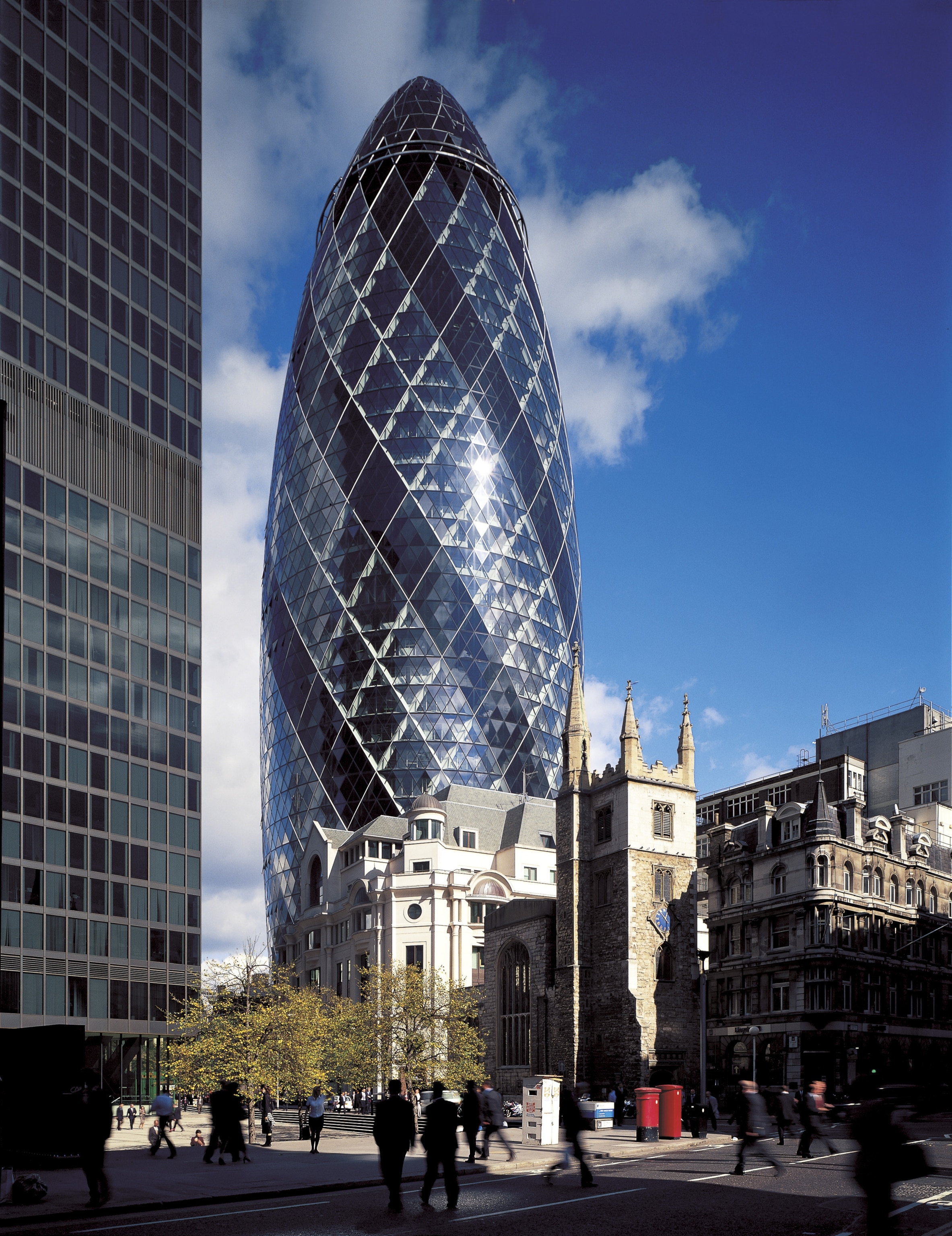

The shape, which architect Norman Foster has likened to a pinecone rather than a pickle, affords environmental benefits, too. For example, the curved structure lessens wind in the plaza and enhances skyline views. Meanwhile, vertical shafts inside the building pull in fresh air for natural ventilation and double-glazed exterior panels limit heat from the sun, reducing the need for air-conditioning. As a result, the 41-story building consumes half the energy required by similar towers.
Shenzhen Energy Mansion, Shenzhen
When designing the Shenzhen Energy Mansion, the headquarters of state-owned Shenzhen Energy Group, Bjarke Ingels Group wanted the building to look and function differently. Given the narrow building site and subtropical climate, the architects proposed a novel rippling facade, inspired by palm fronds and China’s terraced hillsides, that would capture natural light and save energy.
As a result, the pleat-like lines on the exterior oscillate between transparent and opaque, narrow and broad, straight and zigzagging to provide more natural light on the building’s shadier sides, and less on the sunnier sides—a design decision that reduces air-conditioning usage by 30 percent.
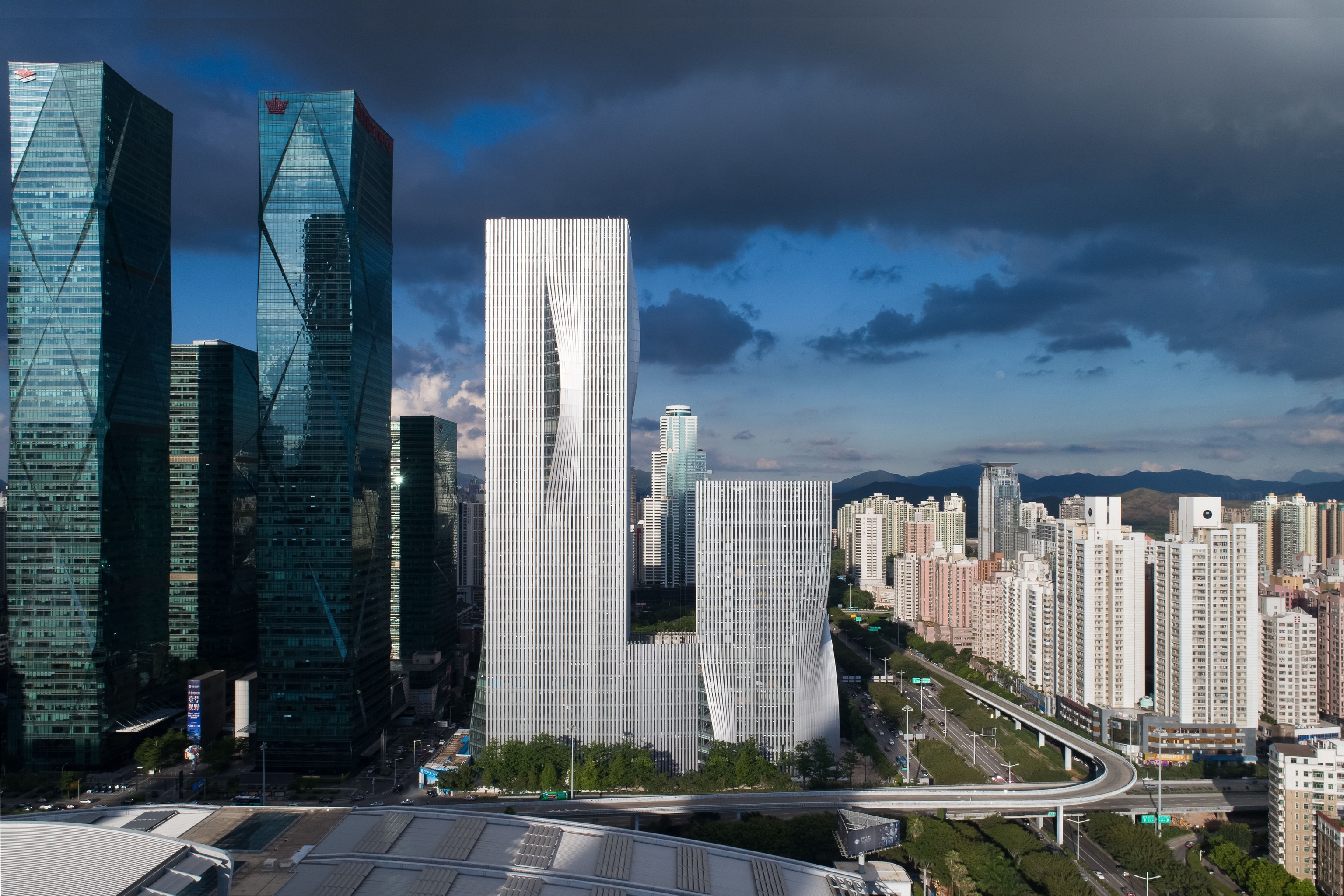
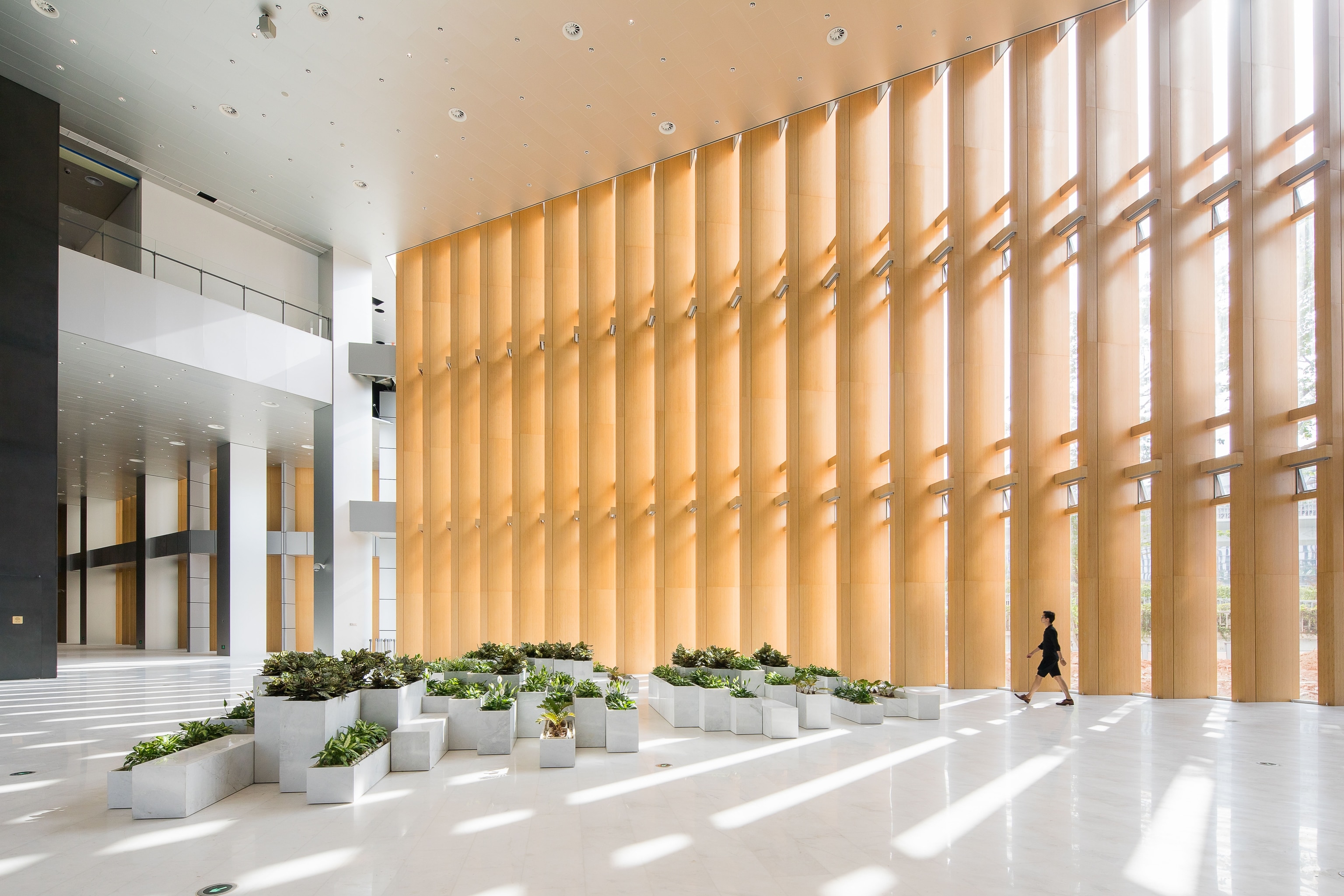
Completed in 2017, the LEED Gold-certified building also has a gray-water recycling program, high-efficiency lighting, a “dual chilled water plus energy storage system” that reduces the electricity needed to cool the building, three rooftop parks and lots of green space for the public to enjoy.

